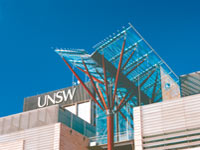|
|||||||||||||||||||||||||||||||||||||||||||||||
| Biomedical Instrumentation, Measurement and Design - ELEC4623 | |||||||||||||||||||||||||||||||||||||||||||||||

Description Introduction to Biomedical Instrumentation and Physiological Measurement. The nature of biomedical signals. The origin of biopotentials and other biological signals. The volume conductor and field potentials. Biopotential electrodes .Tissue equivalent circuits .Principles and operation of basic transducers and sensors. Microelectronic sensors. Sources and characteristics of biological and instrumentation noise. Basic biopotential amplifiers. Interference coupling. Use of grounds and shields for reducing interference noise. ECG lead systems and waveforms. Design of a practical ECG preamplifier. Safety and performance standards (ASA, IEC and FDA) for medical instrumentation Design implications of international safety and performance standards Biological signal processing (I): Design of analogue filters. Effect of filter characteristics on waveform morphometry. Biological signal processing (II): Design of digital filters. Statistical and algorithmic methods for the automated signal detection and analysis. The measurement of blood pressure. The measurement of blood flow and volumes The measurement of respiratory flows. .Design Case Study: Hot wire Anemometry for respiratory flow measurements. The basics of Ultrasound.
|
|||||||||||||||||||||||||||||||||||||||||||||||


